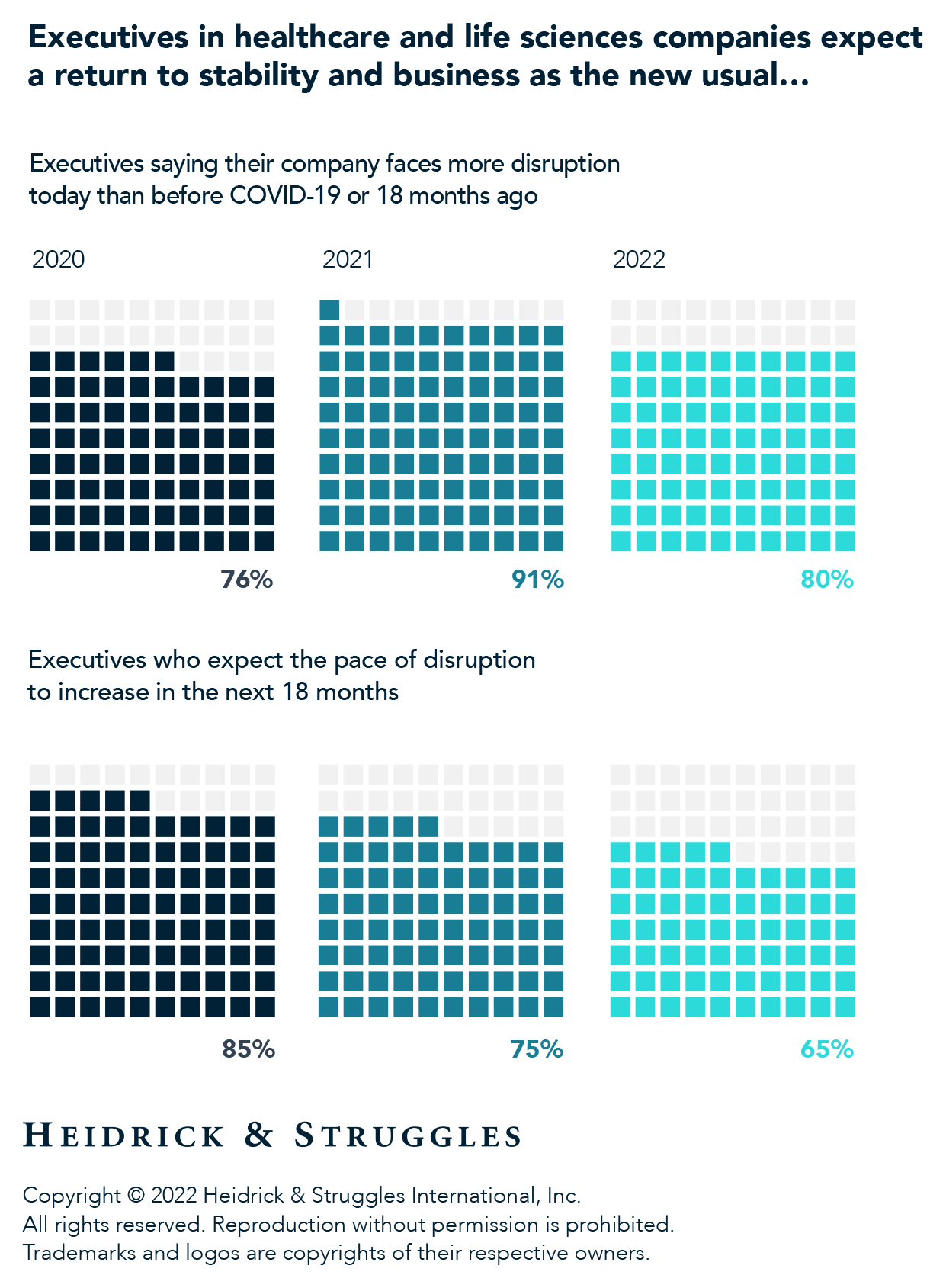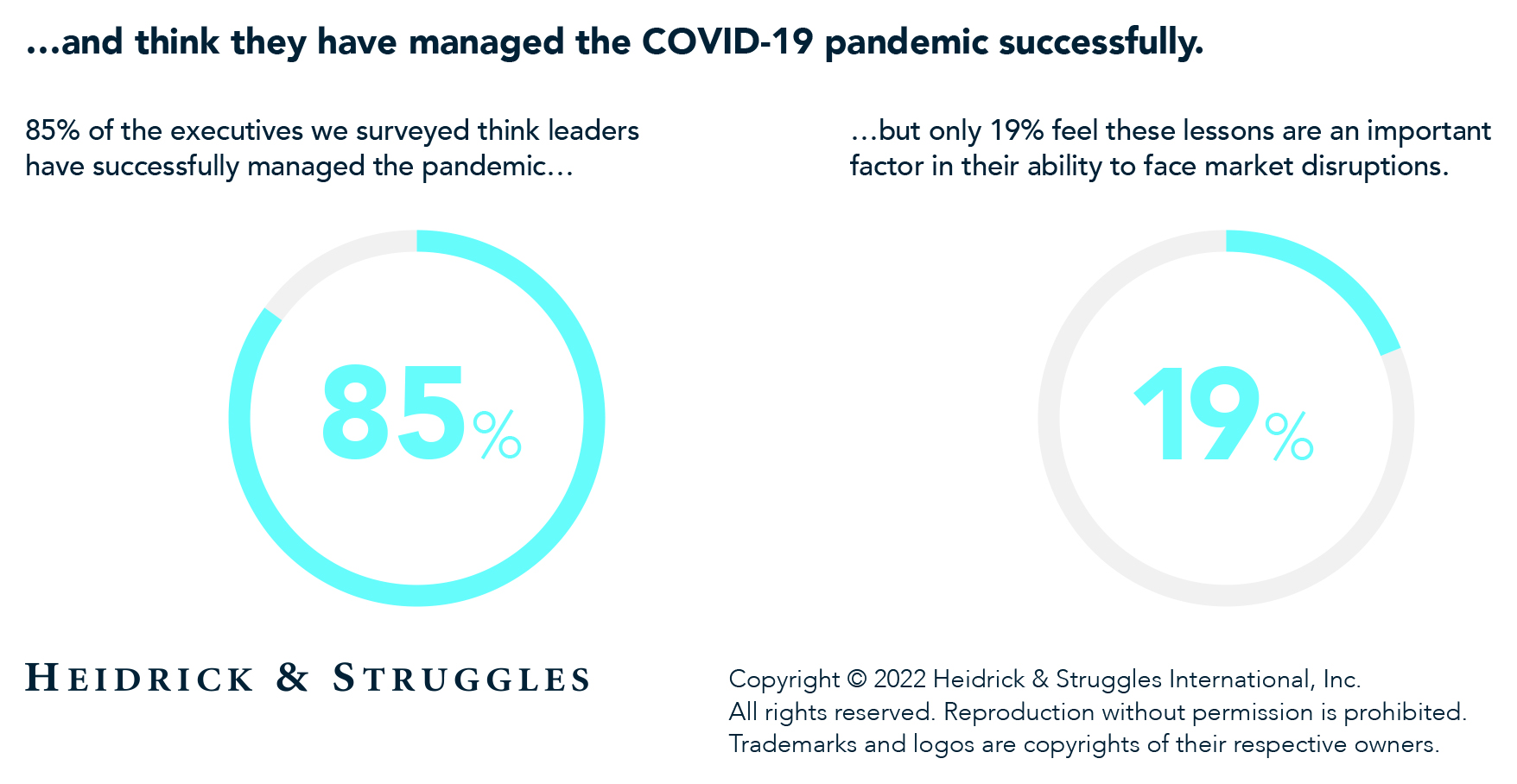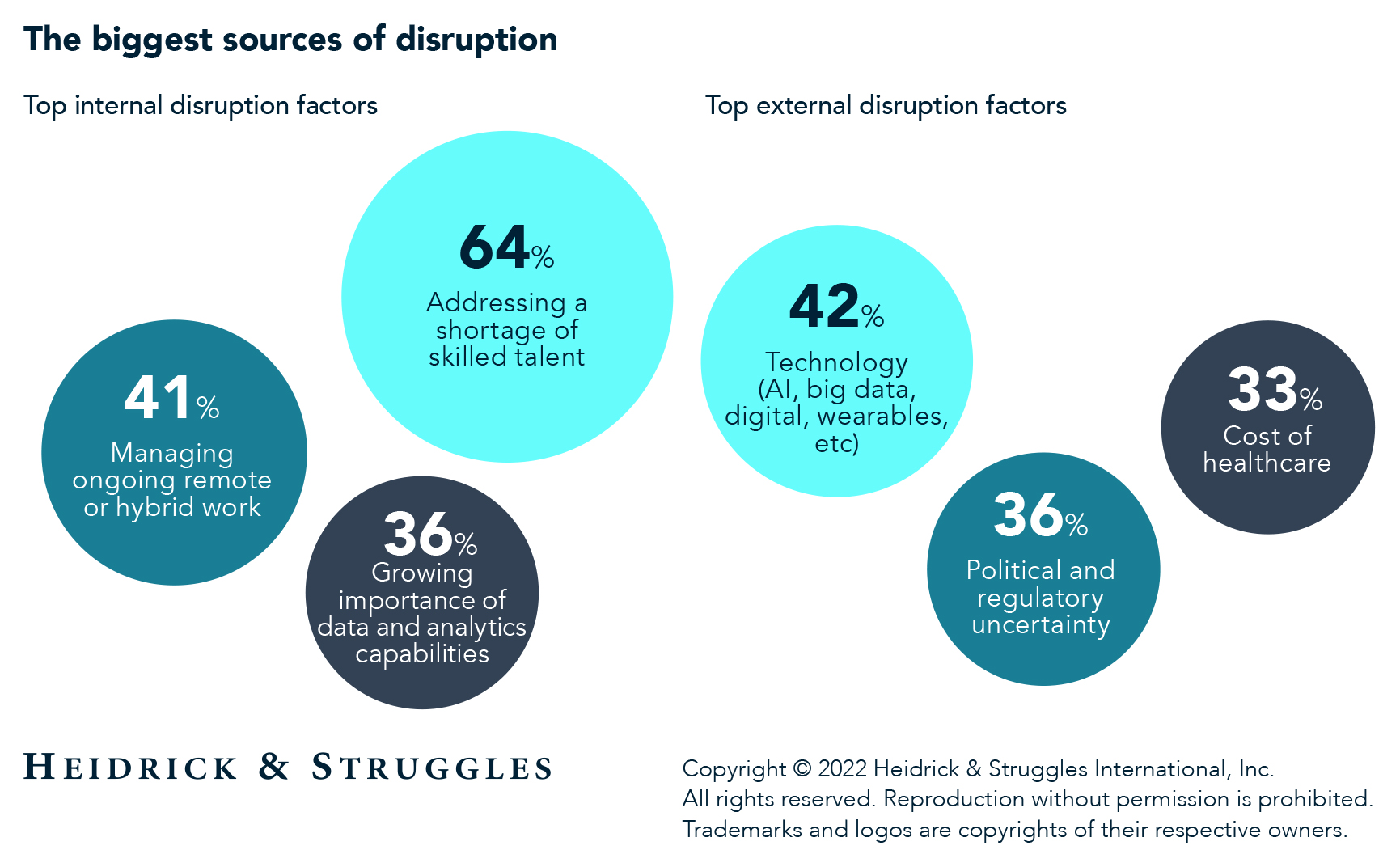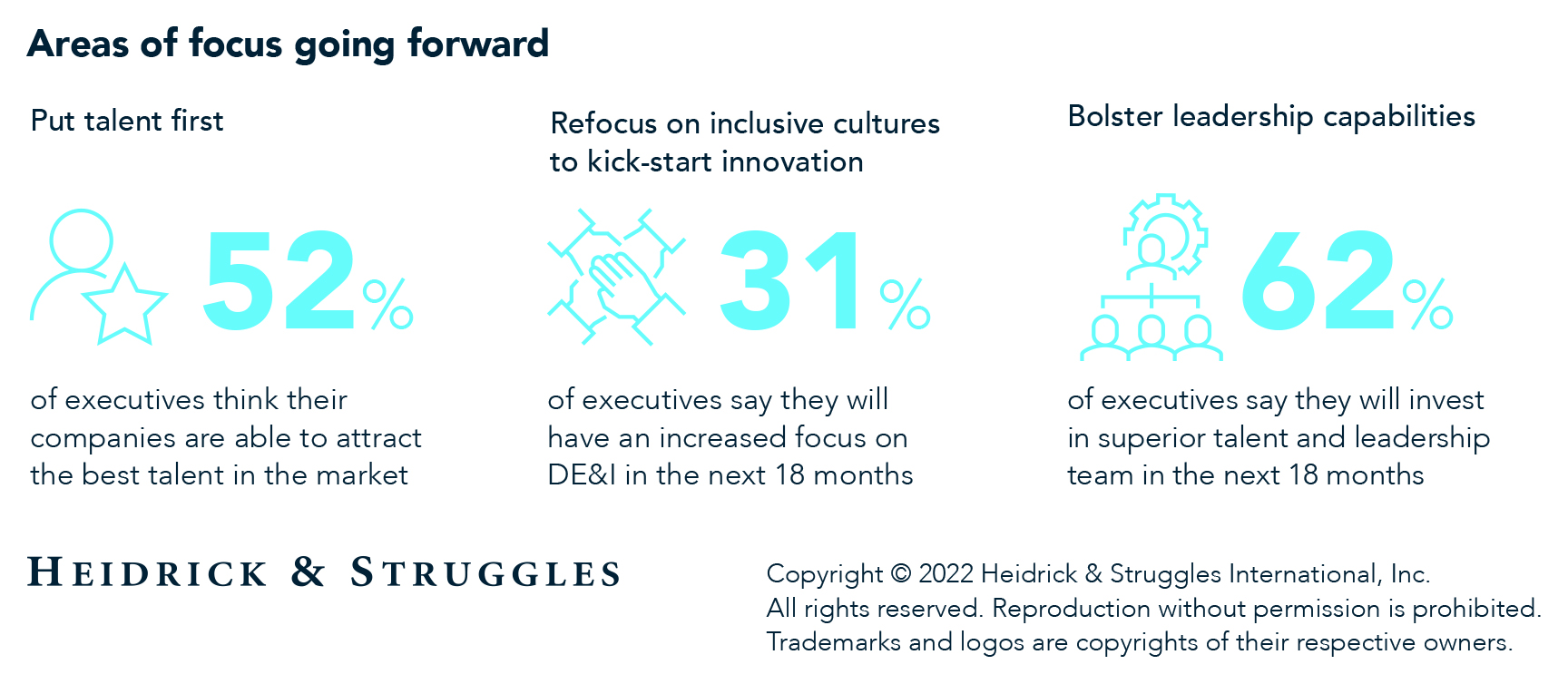Balancing Disruption and Stability in Healthcare and Life Sciences 2022
Heidrick & Struggles recently conducted an online survey of 159 senior-level executives in the healthcare and life sciences sector in order to understand how organizations are preparing for and responding to market disruption. Regionally, 66% of respondents were from the United States and Canada, 26% from Europe, and 4% from Asia Pacific and the Middle East. Thirty-seven percent of respondents were CEOs, 7% other C-suite executives, 10% general managers or other business leaders, and a further 28% were board members; others were leaders of functions including commercial, finance, HR, and R&D. Fifty-three percent of respondents had more than 25 years of experience in the healthcare and life sciences industry. Twenty percent of respondents were at companies with more than $5 billion in annual revenue, and a further 21% at companies with annual revenue between $1 billion and $5 billion. Those surveyed come from companies in biotech (27%), healthcare services (19%), medical technology (19%), and pharma (19%), with small shares of respondents in other sectors. This survey builds on previous Heidrick & Struggles research, including our work on accelerating performance—an in-depth examination of how the world’s largest companies build and sustain performance at the leader, team, and organization levels.
Executive Summary
No other industry had to manage such a monumental undertaking from day one of the COVID-19 pandemic as did the healthcare industry: to find a solution to a virus that has been devastating lives and economies alike while simultaneously managing their own organizational response to the crisis. It comes as close as it gets to a worst-case disruption scenario.
So how do executives in the industry feel they have handled the events of the past couple of years? The majority of respondents—80%—see more disruption today than before the pandemic, and two-thirds expect more disruption over the next 18 months. Nonetheless, those figures are down from the peak we saw in our prior survey.
Furthermore, there is a sense of contentment among executives about how their companies managed through COVID-19: 85% think their leaders have been successful in managing their organizations through the pandemic. And some executives think that the improved reputation of some parts of the industry will give them a lasting advantage in the ability to attract talent and build better relationships with customers and regulators.
Looking ahead, the survey indicates that many executives are now retuning their companies for growth. They will be restructuring their organizations, reevaluating strategic goals, and shifting their organizational culture. Success will depend in large part on attracting and retaining the best talent. However, the fact that only 52% of executives say their companies currently do attract and retain the best talent means that many need to take steps in three areas: rethinking their talent strategy, creating inclusive cultures, and bolstering their leadership capabilities.



